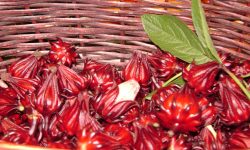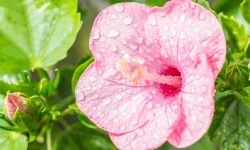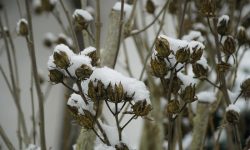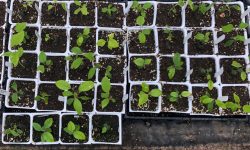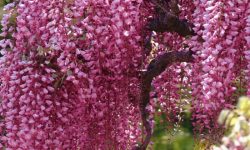Echinacea, widely known as coneflower, has become a beloved choice for gardeners who want both beauty and resilience in their outdoor spaces. With bold, daisy-like flowers in shades of purple, pink, and white, echinacea adds vibrant color while attracting butterflies, bees, and other pollinators. Beyond its ornamental appeal, this perennial is also valued for its medicinal properties, making it a plant of both beauty and purpose. However, the secret to enjoying long-lasting blooms and strong growth lies not only in care but also in planting at the right time. Understanding when to plant echinacea sets the stage for success, ensuring that the roots establish well and the plant thrives season after season.
Timing is often the difference between average results and spectacular displays of echinacea. Plant too early, and the seeds or seedlings may struggle against cool, unstable soil conditions. Plant too late, and the young roots may not have enough time to strengthen before facing summer heat or winter frost. The right planting window allows echinacea to settle comfortably into its environment, leading to healthier plants, greater resistance to stress, and more abundant blooms. By following the right guidance, you can enjoy a thriving echinacea garden that returns reliably each year with stunning flowers and lasting beauty.
Understanding Echinacea and Its Growth Cycle

Echinacea is a hardy perennial that originates from the prairies and open woodlands of North America. Its natural habitat has shaped the way it grows and thrives, making it well-suited for a wide range of gardens today. The plant produces strong, upright stems topped with large, daisy-like blooms that usually appear in summer and continue into early fall. Beneath the surface, echinacea develops a deep taproot system, which gives it resilience against drought and poor soil conditions. To grow successfully, it requires a planting time that allows these roots to anchor before stressful weather begins.
The growth cycle of echinacea begins with seed germination, which needs warmth and consistent moisture to trigger sprouting. Seedlings gradually develop true leaves before focusing their energy on root establishment. In the first year, plants may remain small and put most of their strength into underground growth. By the second year, once the roots are secure, echinacea rewards gardeners with more vigorous stems and striking blooms. Understanding this rhythm is crucial for planning the right planting schedule, whether you are working with seeds, transplants, or divided clumps.
Echinacea’s flowering stage is the most celebrated part of its life cycle. During mid to late summer, the blooms not only brighten the garden but also support pollinators and beneficial insects. After flowering, the plant produces seed heads that can self-sow if left in place, ensuring natural renewal. In winter, echinacea retreats to its roots, conserving energy for the next season. This dormancy allows it to survive cold temperatures and emerge stronger when warmth returns. By aligning your planting with this cycle, you give the plant the best opportunity to thrive. Strong roots, steady growth, and well-timed planting together lead to the healthy, vibrant displays that make echinacea a gardener’s favorite.
Best Time to Plant Echinacea in Different Climates
The ideal planting time for echinacea depends largely on the climate in which it grows. In regions with cold winters and late frosts, spring is often the safest choice. Planting in spring allows seeds or young plants to settle into warming soil without the risk of freeze damage. As temperatures rise gradually, echinacea seedlings have time to establish roots before the intense heat of midsummer. This ensures stronger growth during the first season, setting the stage for reliable blooms in subsequent years.
In areas with milder winters, fall planting can be just as effective, if not better. Soil remains warm enough after summer to encourage root development, while cooler air temperatures reduce stress on young plants. By the time spring arrives, echinacea that was planted in fall already has an established root system, giving it a head start on vigorous growth and earlier blooms. This approach works particularly well in climates where winters are not harsh and the soil does not freeze deeply. Choosing fall planting in such regions often results in larger, healthier clumps that adapt quickly to seasonal changes.
Gardeners in hot, dry climates need to consider a slightly different strategy. Planting too late in spring risks exposing seedlings to scorching summer heat before their roots are ready to cope. In these environments, the best time is usually early spring or very late summer, just before the weather cools. This timing reduces transplant shock and ensures that echinacea receives consistent moisture while developing roots. For tropical or subtropical regions where winters are mild and rainfall is steady, staggered planting throughout the year may also succeed, though the hottest months should be avoided. By matching planting schedules with local climate patterns, gardeners give echinacea the best chance to thrive. Understanding these variations makes it easier to achieve strong growth and long-lasting blooms, no matter the region.
Seasonal Planting Benefits
Spring Planting Advantages
Planting echinacea in spring works well for cooler climates. Soil warms gradually, helping seeds germinate and roots grow strong. Young plants benefit from increasing sunlight and gentle warmth, which encourages steady growth. Spring planting avoids frost damage from early planting. Proper timing builds resilience before summer heat. Early planting provides a longer growing season to develop strong roots. Healthy roots ensure long-term growth and flowering. Initial blooms may be small, but spring planting often produces vibrant flowers next year. Gardeners also benefit from easier water management as rainfall is more consistent, reducing the need for frequent irrigation and preventing soil from drying too quickly.
Spring planting also allows better integration with companion plants. Many perennials are planted simultaneously, helping echinacea complement flowers, herbs, and vegetables. Early planting supports pollinator-friendly gardens, giving bees and butterflies access to nectar. Borders, meadows, or mixed beds can be planned effectively. Overall, spring planting promotes healthier plants, resilient growth, and a visually appealing garden that thrives season after season.
Fall Planting Benefits
Fall planting benefits echinacea in regions with mild winters. Soil retains warmth while air cools, reducing stress on young plants. Energy focuses on root growth, establishing strong underground systems before winter dormancy. Well-rooted plants grow vigorously in spring and often bloom earlier than spring-planted specimens. Cooler temperatures reduce weed and pest competition. Soil retains moisture longer, lowering watering needs. Plants establish more easily, saving effort and promoting healthy growth. Extended root development improves drought tolerance. Fall planting suits gardeners seeking low-maintenance, resilient perennials with reliable, pollinator-friendly blooms each year.
Fall planting strengthens long-term plant resilience. Rooted plants adapt better to local soils, grow sturdy stems, and flower abundantly. Mulching protects roots and conserves moisture during cold months. These methods reduce maintenance and promote healthy growth. Gardeners enjoy stronger echinacea that thrives with minimal care, providing beauty and supporting pollinators year after year.
Summer Planting Challenges
Summer planting is challenging due to high temperatures and strong sun. Young plants often face severe water stress, and soil dries rapidly, making moisture retention difficult. Heat can stunt growth, weaken roots, and reduce flower production. Gardeners must carefully monitor irrigation, water consistently, and provide shade during peak sunlight. Weeds and pests are more active in summer, competing for nutrients and potentially damaging leaves and flowers. Frequent checks and intervention are necessary to ensure plants establish properly. Mulching helps conserve soil moisture, reduces weed growth, and stabilizes soil temperature. Despite these precautions, summer planting requires significantly more care than spring or fall.
Long-term growth from summer planting is less predictable. Plants have limited time to establish strong roots before cooler months arrive, which can delay blooms and reduce first-year flowering. Extra attention is required to maintain soil health, manage pests, and ensure adequate hydration. Gardeners must plan for supplemental watering, shading, and pest control to support healthy growth. Hot and dry conditions can further stress young plants, making it essential to monitor leaf condition, soil moisture, and root development regularly. While summer planting is possible, it demands more effort and vigilance to achieve successful establishment and long-term plant resilience.
Soil Preparation for Successful Planting
Healthy soil forms the foundation for successful echinacea growth, and careful preparation before planting greatly increases the chances of success. Echinacea performs best in soil that drains well and prevents water from lingering around the roots, since excess moisture can quickly lead to rot. Heavy clay soils often hold too much water, while sandy soils dry out too quickly, creating stress for young plants. By incorporating organic matter such as compost, aged manure, or leaf mold, gardeners can improve both structure and fertility. This balance of texture and nutrients creates the conditions echinacea needs to establish strong roots and develop into vigorous, resilient plants.
Soil pH is another key factor in preparation, as echinacea grows best in neutral to slightly acidic soil with an ideal range between 6.0 and 7.0. Testing the soil before planting reveals its current condition and guides any necessary adjustments. If the soil is too acidic, lime can raise the pH, while sulfur lowers it in overly alkaline ground. Achieving this balance not only supports steady root activity but also improves the plant’s ability to absorb nutrients efficiently. With the right pH, echinacea is less likely to experience deficiencies, stunted growth, or weak stems, giving it a stronger start in the garden.
Beyond structure and pH, enriching the soil ensures echinacea has access to consistent nutrition during its early growth stages. Adding compost or a balanced, slow-release fertilizer before planting helps provide a steady flow of essential elements. In gardens with poor drainage, creating raised beds or slightly mounded planting areas lifts the roots above saturated ground, reducing stress and preventing disease. Once the soil is prepared thoroughly, echinacea becomes more capable of withstanding environmental challenges and rewarding the gardener with long-lasting blooms. Investing time in soil improvement at the beginning reduces the need for heavy maintenance later, making it a crucial step for years of healthy, dependable growth.
How to Plant Echinacea Seeds
Planting echinacea from seed is affordable and rewarding, offering an easy way to add this hardy perennial. The process begins with choosing high-quality seeds from a trusted supplier or harvested from healthy existing plants. Many gardeners prefer starting seeds indoors in late winter or early spring, giving seedlings time to strengthen before transplanting. For best results, sow seeds in trays filled with a light, well-draining seed-starting mix. Cover seeds lightly with no more than a quarter inch of soil. This protects them while still allowing access to light that supports germination.
A key step in growing echinacea from seed is stratification, which mimics natural winter conditions. Many echinacea seeds benefit from a chilling period of four to six weeks before planting. This can be done by placing seeds in a moist paper towel inside a sealed plastic bag in the refrigerator. After stratification, move seeds into prepared trays or pots. Keep the soil moist but not soggy during germination, which usually takes two to four weeks. Adequate light from a sunny windowsill or grow lights ensures seedlings develop strong stems and healthy leaves.
When seedlings grow two or three sets of true leaves, they are ready for hardening off. This process gradually exposes them to outdoor conditions over a week, building resilience. Transplant seedlings into prepared garden beds once frost risk has passed and soil is consistently warm. With patience and care, echinacea grown from seed matures into robust plants that return year after year. Growing echinacea from seed saves money and provides the satisfaction of nurturing plants from their earliest life stages.
Transplanting Echinacea Seedlings
Transplanting echinacea seedlings is an important step in helping the plants transition from their controlled indoor environment to the open garden. Timing plays a key role in this process. Seedlings should only be moved once the danger of frost has completely passed and the soil has warmed. Before transplanting, seedlings need to be hardened off, which means gradually introducing them to outdoor conditions. This usually takes about a week, with seedlings placed outside for a few hours each day and gradually increasing their exposure. Hardening off strengthens the plants and reduces transplant shock.
When preparing to transplant, it is essential to select a location with full sun and well-drained soil. Echinacea thrives in bright conditions, and at least six hours of direct sunlight daily ensures healthy development and abundant blooms. Soil should already be enriched with compost or organic matter to give seedlings the nutrients they need. Each planting hole should be slightly larger than the root ball to allow roots to spread comfortably. Seedlings should be spaced about one to two feet apart to provide good airflow, reduce disease risk, and give each plant room to grow into a full clump over time.
After transplanting, watering is critical to help seedlings settle into their new environment. Water thoroughly at planting time to eliminate air pockets around the roots, then continue providing consistent moisture until plants are established. Mulching around the base with organic material such as shredded bark or straw helps conserve moisture and regulate soil temperature. With careful handling during transplanting and attentive care afterward, echinacea seedlings adapt quickly to garden life. Once established, they require minimal maintenance and reward the gardener with strong growth and striking summer blooms that attract pollinators year after year.
Watering Requirements After Planting
Watering echinacea correctly is one of the most important steps in helping the plant establish itself. Newly planted echinacea, whether started from seed or transplanted seedlings, requires consistent moisture in the soil during the first few weeks. This steady supply of water encourages roots to grow deep and secure, which strengthens the plant for long-term survival. However, it is equally important to avoid waterlogged conditions, as standing water can lead to root rot. The goal is to keep the soil evenly moist without becoming soggy, creating a stable environment for early growth.
As echinacea matures, its deep taproot system allows it to tolerate drought far better than many other perennials. Once established, echinacea generally needs less frequent watering and can survive periods of dry weather with minimal stress. Gardeners should focus on deep watering rather than frequent, shallow applications. A thorough soaking encourages roots to grow downward instead of remaining near the surface. This deeper root system not only helps the plant access water more efficiently but also provides stability during hot, dry spells in summer. Proper watering at this stage builds resilience that benefits the plant for years.
Mulching plays a valuable role in maintaining proper soil moisture. A layer of organic mulch around the base of the plant helps reduce evaporation, keeps the root zone cool, and minimizes weed competition. During the first growing season, consistent watering combined with mulch gives echinacea the best start and reduces stress from fluctuating weather. Once plants are fully established, natural rainfall is often enough to sustain them, though supplemental watering may be needed during extended droughts or heat waves. By understanding and adapting to the plant’s watering needs at different growth stages, gardeners ensure echinacea develops into a healthy, resilient perennial that rewards with vibrant blooms, strong stems, and reliable performance in the garden year after year.
Sunlight and Temperature Needs
Full Sunlight for Strong Growth
Echinacea is a sun-loving perennial that thrives best when planted in a location receiving at least six to eight hours of direct sunlight each day. Ample sunlight encourages the production of sturdy stems, abundant flower buds, and vibrant blooms with rich colors. Without sufficient light, echinacea often grows tall and spindly, with fewer and smaller flowers, making the plant less attractive overall. When selecting a planting site, gardeners should prioritize open areas with unobstructed sunlight to ensure the plant’s energy is directed toward healthy growth and consistent flowering.
While echinacea tolerates partial shade, especially in the afternoon in warmer regions, full sun exposure is ideal for maximizing bloom potential. Morning sunlight is particularly beneficial because it dries dew quickly, reducing the risk of fungal diseases. Sun-drenched locations also help echinacea develop deeper root systems, which increase the plant’s ability to withstand periods of drought. By choosing the brightest spot available, gardeners set the foundation for echinacea to perform at its peak, producing long-lasting, eye-catching flowers season after season.
Temperature Tolerance and Seasonal Adaptability
Echinacea is highly adaptable to a wide range of temperatures, making it a resilient choice for gardens in various climates. It performs well in USDA hardiness zones 3 through 9, tolerating both cold winters and hot summers. During the growing season, echinacea prefers moderate daytime temperatures between 65 and 85°F, which encourage steady growth and prolific flowering. In colder regions, echinacea naturally dies back in winter, conserving energy in its root system until spring returns, while in milder zones, it may retain some foliage year-round.
Extreme heat, however, can temporarily slow blooming or cause stress if the soil dries out too quickly. Mulching and deep watering help regulate soil temperature and keep roots cool during hot spells. Conversely, in regions with long, harsh winters, a protective layer of mulch shields the crown from freeze-thaw cycles. This adaptability makes echinacea a reliable perennial that continues to return year after year, provided it is given proper care suited to the local climate. With the right balance of sunlight and seasonal temperature management, echinacea rewards gardeners with healthy, resilient plants that brighten the garden with their striking, daisy-like blooms.
Transplanting and Early Care for Echinacea Seedlings
Transplanting echinacea seedlings requires care to ensure healthy establishment in the garden. Once seedlings have been hardened off, they are ready for outdoor planting. Choose a sunny location with soil that drains well, as echinacea thrives best in full sunlight. Dig holes slightly larger than the root ball of each seedling. Place the plants at the same depth they were growing indoors to avoid stress. Firm the soil gently around the roots and water thoroughly after planting. This helps eliminate air pockets and supports early root contact with the soil.
During the first few weeks, consistent watering is essential. Soil should remain evenly moist but never waterlogged, as excess moisture harms young roots. Mulching around the base of seedlings helps retain soil moisture and reduces weed competition. Organic mulch such as straw or shredded leaves also regulates soil temperature. These conditions create a stable environment that supports early root development. Gardeners should monitor seedlings closely for signs of stress, such as wilting or yellowing leaves. Quick adjustments to watering or shade protection may be needed during hot or windy days.
As seedlings grow stronger, care can shift toward building long-term resilience. Reducing the frequency of watering gradually encourages deeper root growth. Removing weeds regularly ensures seedlings receive nutrients without unnecessary competition. A light application of balanced fertilizer may support early growth but is not always required. Most echinacea seedlings adapt quickly once established and need little maintenance. With careful transplanting and proper early care, these young plants soon transform into hardy perennials. Over time, they reward gardeners with vibrant blooms that return reliably each year.
Fertilizing Echinacea for Strong Growth
Fertilizing echinacea correctly supports strong growth and long-lasting health. These hardy perennials are naturally resilient and do not require heavy feeding. However, providing balanced nutrition during key stages can make a noticeable difference. Before planting, enrich the soil with compost or aged manure to improve fertility and structure. This organic base provides a slow, steady supply of nutrients as the plants establish. During the first year, light feeding is usually enough because echinacea focuses on root development. Over-fertilizing at this stage may encourage weak stems and fewer blooms.
As echinacea matures, occasional fertilization helps maintain vigor and enhance flower production. A balanced, slow-release fertilizer applied in early spring supports strong shoot growth and prepares the plant for blooming. Avoid high-nitrogen fertilizers because they promote leafy growth at the expense of flowers. Mid-season feeding with compost tea or diluted liquid fertilizer can also provide a gentle boost. This extra nutrition helps sustain blooming through summer without stressing the plant. Healthy, well-fed echinacea usually develops sturdier stems, larger blooms, and stronger resistance to pests and diseases.
Long-term fertilization strategies should focus on moderation and soil health. Applying a thin layer of compost around the base each spring enriches the soil naturally. This method improves nutrient levels, enhances soil structure, and encourages beneficial organisms. Gardeners should observe their plants closely, as yellowing leaves or poor blooming may signal a nutrient imbalance. By adjusting fertilization only when needed, echinacea remains resilient without excessive care. Proper feeding ensures these perennials thrive year after year, rewarding the gardener with reliable growth, vibrant flowers, and a natural habitat for pollinators.
Companion Planting with Echinacea
Companion planting with echinacea enhances both garden beauty and plant health. Echinacea pairs well with many perennials and annuals. Their tall, colorful blooms add structure and attract pollinators throughout the season. Bees, butterflies, and even hummingbirds are frequent visitors, benefiting nearby plants. By mixing echinacea with compatible companions, gardeners create a diverse and resilient ecosystem. This approach also reduces pests, improves pollination, and increases the overall productivity of the garden.
Echinacea grows well alongside other sun-loving flowers. Black-eyed Susans, bee balm, and coreopsis all complement echinacea in both height and color. These combinations create stunning displays while supporting pollinators continuously. Herbs like lavender and sage also thrive in similar conditions. Their aromatic foliage may deter certain pests while adding texture to planting areas. Yarrow and catmint are also strong choices, providing continuous blooms that keep pollinators active. Together, these plants form gardens that balance beauty with practical function, offering color and resilience.
Companion planting also improves soil and resource use. Echinacea’s deep roots help stabilize soil and access nutrients below the surface. Shallow-rooted companions benefit by sharing space without heavy competition. Adding nitrogen-fixing plants like lupines or clover improves soil fertility naturally. This reduces the need for synthetic fertilizers while enriching the ground for all plants. Strong companions also provide shade and shelter, protecting echinacea seedlings during hot days. By choosing the right partners, gardeners support healthier growth and longer bloom seasons. A thoughtful mix ensures echinacea thrives while the entire garden flourishes with vibrant, lasting color. Companion planting creates harmony, reduces maintenance, and supports a sustainable garden environment year after year.
Pest and Disease Management for Echinacea
Common Pests Affecting Echinacea
Echinacea is generally hardy, but pests can sometimes cause problems. Aphids are common and feed on tender stems, sucking plant sap and weakening growth. Infested plants may show curled leaves and stunted flowers. Gardeners can control aphids by spraying water or using insecticidal soap. Japanese beetles also feed on echinacea foliage and blooms, leaving ragged holes behind. Handpicking beetles in early morning helps reduce damage. Slugs and snails sometimes attack young seedlings, especially in damp conditions. Mulching with coarse materials or using barriers keeps these pests away. Attracting natural predators like ladybugs, lacewings, or birds can also support pest control without chemicals.
Preventive practices make pest management easier and safer. Healthy plants resist infestations better than stressed ones. Proper spacing ensures good air circulation and lowers the chance of outbreaks. Removing weeds reduces hiding places for many insects. Gardeners should also inspect plants regularly and act quickly when pests appear. Rotating echinacea with other plants can break pest cycles over several seasons. Organic sprays like neem oil may help when infestations become severe. With consistent care and early action, most pest problems remain manageable. Echinacea usually recovers well, continuing to provide blooms for pollinators throughout the growing season.
Diseases That May Impact Echinacea
While echinacea resists many diseases, fungal infections may appear in certain conditions. Powdery mildew shows as a white coating on leaves, often in humid weather. Good spacing and airflow reduce the risk, while affected leaves should be removed promptly. Root rot occurs when soil stays too wet, especially in heavy clay. Well-draining soil and careful watering prevent this problem. Leaf spots caused by fungi may leave brown or black patches, weakening photosynthesis. Removing debris around plants and rotating crops helps limit fungal spread. Preventing excess moisture is the most reliable strategy against these issues.
Viruses can also affect echinacea, though they are less common. Symptoms include distorted leaves, yellow streaks, or unusual flower shapes. Infected plants cannot be cured and should be removed to protect healthy ones. Using clean tools and disease-free seeds or seedlings reduces the risk of spreading infections. Strong soil health and balanced nutrition give plants resilience against many problems. Gardeners should avoid over-fertilizing, as lush, weak growth is more disease-prone. With proper prevention and maintenance, echinacea thrives year after year. By managing diseases quickly and effectively, gardeners enjoy strong plants with long-lasting, colorful blooms.
Long-Term Maintenance and Bloom Extension
Companion planting with echinacea can create a more balanced garden. This perennial attracts many pollinators, including bees and butterflies. When paired with vegetables, echinacea supports higher pollination rates and improves harvests. The plant also helps deter certain pests that dislike its strong fragrance. Gardeners often place echinacea near cucumbers, squash, and tomatoes. These crops benefit from the boost in pollination and reduced pest pressure. Strong roots also stabilize soil, protecting delicate vegetable beds from erosion and compaction.
Herbs also grow well when planted beside echinacea. Basil, oregano, and thyme gain protection from harmful insects. Their aromatic oils blend with echinacea to form a natural barrier. This makes the surrounding space less attractive to aphids and beetles. At the same time, echinacea does not compete aggressively for nutrients. The balanced growth habit allows herbs to thrive without struggle. Many gardeners appreciate this harmony, especially in smaller spaces or raised beds. The result is a healthier, more vibrant planting area with reduced maintenance.
Flower companions add both beauty and ecological benefits to echinacea. Black-eyed Susans, coneflowers, and bee balm create colorful, long-lasting displays. These flowers bloom alongside echinacea, extending the season for pollinators. Birds and beneficial insects also find shelter among the mixed plantings. By diversifying the garden with multiple blooms, you encourage resilience. Diseases and pests spread less easily when plants are intermixed. The garden looks alive, welcoming, and balanced across the growing months. Companion planting with echinacea strengthens both function and beauty in any landscape.
FAQ about Companion Planting with Echinacea
What vegetables grow best with echinacea?
Echinacea pairs well with cucumbers, squash, and tomatoes. Its flowers attract pollinators that improve vegetable yields. The plant’s strong scent also repels certain pests, creating a healthier growing environment. Placing echinacea near vegetables helps balance the ecosystem while boosting both beauty and productivity in your garden.
Can echinacea improve pollination in the garden?
Yes, echinacea attracts bees, butterflies, and other pollinators. These beneficial visitors increase the pollination rate of nearby vegetables and flowers. More pollination means better fruit set and larger harvests. Planting echinacea near crops ensures a steady flow of pollinators, enhancing both garden health and productivity throughout the growing season.
Does echinacea compete with herbs for nutrients?
No, echinacea has a balanced growth habit that prevents excessive competition. Herbs like basil, oregano, and thyme grow well nearby. The plants complement each other by sharing space without crowding. Echinacea’s strong roots stabilize soil while herbs release aromatic oils. Together, they create a healthier, more resilient planting area with minimal nutrient stress.
Which flowers complement echinacea in companion planting?
Echinacea grows beautifully with black-eyed Susans, bee balm, and other coneflowers. These plants bloom during the same season, providing continuous food for pollinators. Mixing echinacea with colorful flowers adds beauty while strengthening ecological balance. This diversity reduces pest pressure, supports wildlife, and creates a visually stunning, low-maintenance garden design.
Can echinacea help deter garden pests naturally?
Yes, echinacea’s strong scent discourages certain pests like beetles and aphids. When planted with herbs and vegetables, it enhances natural pest resistance. Combining echinacea with aromatic herbs strengthens this effect. The result is fewer infestations, healthier crops, and reduced need for chemical pesticides, keeping your garden thriving and more sustainable.
Conclusion
Companion planting with echinacea offers both beauty and practical benefits. It attracts pollinators, supports vegetable growth, and helps deter pests naturally. When paired with herbs and flowers, echinacea promotes a thriving, balanced ecosystem. Gardeners enjoy healthier plants, improved harvests, and long-lasting color. By including echinacea, you create a garden that is sustainable, vibrant, and resilient.


